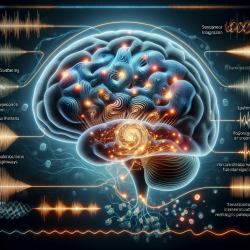Introduction
Xia–Gibbs Syndrome (XGS) is a rare genetic disorder caused by de novo truncating variants in the AHDC1 gene. Characterized by significant intellectual disability, XGS is typically diagnosed in childhood. However, a recent case study published in Cold Spring Harbor Molecular Case Studies highlights the natural history of XGS in adulthood, providing valuable insights for practitioners.
Key Findings from the Case Study
The case report discusses a 55-year-old male diagnosed with XGS, marking the oldest known case to date. The individual exhibited classic dysmorphic features and intellectual disability but had no major health issues other than those associated with XGS. This case underscores the wide phenotypic spectrum of XGS and the importance of considering genetic evaluations in adults with unexplained intellectual disabilities.
Implications for Practitioners
For speech-language pathologists and other practitioners working with individuals with intellectual disabilities, this case study offers several important takeaways:
- Consider Genetic Evaluations: Whole-exome sequencing (WES) can be a powerful diagnostic tool, even in adults. This case highlights the underutilization of WES in adult populations and suggests that practitioners should advocate for genetic evaluations when faced with unexplained intellectual disabilities.
- Monitor for Comorbid Conditions: As individuals with XGS age, they may develop comorbid conditions such as hypertension or scoliosis. Regular monitoring and early intervention can improve quality of life and health outcomes.
- Address Behavioral and Mental Health Issues: Behavioral issues are common in XGS and can significantly impact patient and family quality of life. Early referral to mental health specialists and appropriate pharmacological interventions can mitigate these challenges.
Encouraging Further Research
The variability in phenotypic expression among individuals with XGS, even those with the same genetic mutation, suggests that further research is needed to understand the genotype-phenotype correlations fully. Practitioners are encouraged to contribute to research efforts by documenting and sharing clinical observations and outcomes.
Conclusion
This case report of XGS in adulthood provides valuable insights into the natural history of the disorder and emphasizes the importance of considering genetic evaluations in adults. Practitioners can improve patient outcomes by staying informed about the latest research and advocating for comprehensive diagnostic evaluations.
To read the original research paper, please follow this link: Xia–Gibbs syndrome in adulthood: a case report with insight into the natural history of the condition.










